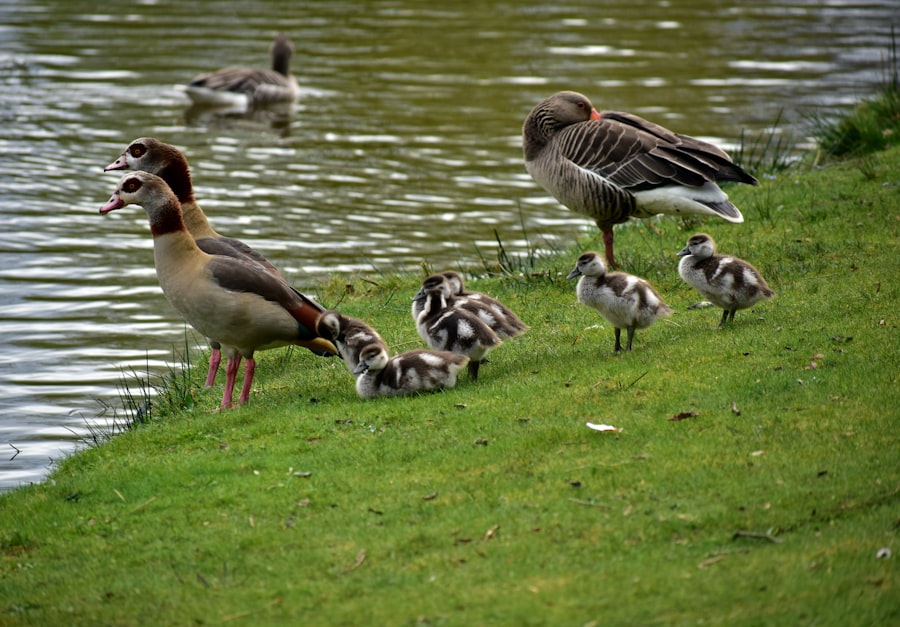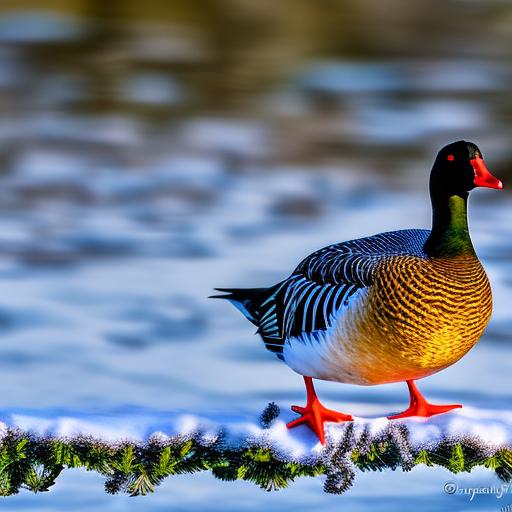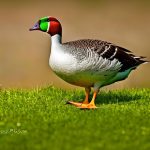Winter can be a challenging time for geese as they face harsh weather conditions and a scarcity of food. Geese are migratory birds that often travel long distances to find suitable habitats for breeding and feeding. However, during the winter months, many geese choose to stay in their wintering grounds, where they face the challenge of staying warm and comfortable.
Keeping geese warm during winter is crucial for their survival and well-being. Geese have a natural ability to regulate their body temperature, but extreme cold can still pose a threat to their health. It is important to provide them with the necessary insulation and shelter to protect them from the cold and ensure their comfort.
Key Takeaways
- Geese face challenges during winter due to the cold weather
- Insulation is important for keeping geese warm
- Springs can be beneficial for keeping geese warm, but have limitations
- Springs work by trapping warm air and releasing it slowly
- Choosing the right type of spring and considering installation factors is important for effectiveness.
The Role of Insulation in Keeping Geese Warm
Insulation plays a vital role in keeping geese warm during winter. Insulation works by trapping air pockets that act as a barrier against the cold. It helps to retain the heat generated by the geese’s bodies and prevents it from escaping into the surrounding environment.
There are various types of insulation commonly used for geese. One popular option is straw or hay, which can be spread on the ground or used to create nests for the geese. Straw provides excellent insulation and helps to keep the geese warm by creating a layer of air between their bodies and the cold ground.
Another type of insulation commonly used for geese is feathers. Geese have a thick layer of down feathers that provide excellent insulation. These feathers are designed to trap air and create a layer of warmth around the bird’s body. Feathers are highly effective at keeping geese warm, even in extremely cold temperatures.
The Benefits and Limitations of Using Springs for Geese
Springs can be an effective way to keep geese warm during winter, providing several benefits. One advantage of using springs is that they provide a constant source of warmth for the geese. Springs are designed to generate heat, which can help to keep the geese comfortable even in freezing temperatures.
Another benefit of using springs is that they are easy to install and maintain. Springs can be placed in the geese’s shelter or nesting area, providing a warm and cozy environment for them. They require minimal maintenance and can last for a long time with proper care.
However, there are also limitations and potential drawbacks to using springs for geese. One limitation is that springs may not provide enough warmth in extremely cold temperatures. While they can help to keep the geese comfortable, additional insulation may be needed to ensure their safety during severe winter weather.
Another potential drawback of using springs is the risk of fire. Springs generate heat through electrical or gas-powered mechanisms, which can pose a fire hazard if not properly installed or maintained. It is important to follow safety guidelines and regularly inspect the springs to prevent any accidents.
How Springs Work to Keep Geese Warm
Springs work by generating heat through electrical or gas-powered mechanisms. The heat produced by the springs helps to keep the geese warm by providing a constant source of warmth in their shelter or nesting area.
Electrical springs typically use heating elements that convert electrical energy into heat. These heating elements are designed to be safe and efficient, providing a steady source of warmth for the geese. Gas-powered springs, on the other hand, use combustion processes to generate heat. They require a supply of gas and proper ventilation to operate safely.
Proper installation and maintenance are crucial for the effective functioning of springs. It is important to ensure that the springs are installed correctly and that all safety measures are followed. Regular inspections and repairs are also necessary to prevent any malfunctions or accidents.
Choosing the Right Type of Spring for Your Geese
When choosing springs for geese, there are several factors to consider. One important factor is the size of the geese’s shelter or nesting area. The size of the springs should be appropriate for the space available to ensure optimal heating.
Another factor to consider is the power source for the springs. Electrical springs require access to electricity, while gas-powered springs require a supply of gas. It is important to choose a power source that is readily available and safe to use.
Different types of springs are available, each with its own benefits. Electric springs are popular due to their ease of use and efficiency. They can be easily controlled and adjusted to provide the desired level of warmth for the geese. Gas-powered springs, on the other hand, may be more suitable for areas without access to electricity.
Factors to Consider When Installing Springs for Geese

Proper installation is essential for the optimal performance of springs in keeping geese warm. When installing springs, it is important to consider the location and placement of the springs. They should be placed in an area that is easily accessible for maintenance and repairs.
Safety considerations are also important when installing springs. It is crucial to follow all safety guidelines and ensure that the springs are installed in a way that minimizes any potential hazards. This includes proper ventilation for gas-powered springs and ensuring that electrical connections are secure and protected.
It is also important to consider the geese’s behavior and habits when installing springs. Geese may be curious animals and may try to interact with or damage the springs. It is important to install them in a way that prevents any potential harm to the geese or damage to the equipment.
Maintenance and Care for Springs During Winter Months
Proper maintenance and care are essential for ensuring the longevity and effectiveness of springs during winter months. Regular inspections should be conducted to check for any signs of wear or damage. Any necessary repairs should be made promptly to prevent any malfunctions or accidents.
It is also important to clean the springs regularly to remove any dirt or debris that may accumulate. This can help to ensure that the springs continue to function properly and provide the necessary warmth for the geese.
During winter months, it is important to monitor the springs closely for any signs of malfunction or failure. This includes checking the temperature output of the springs and ensuring that they are providing the desired level of warmth for the geese. Any issues should be addressed immediately to prevent any discomfort or harm to the geese.
Alternative Methods for Keeping Geese Warm in Winter
While springs can be an effective way to keep geese warm during winter, there are also alternative methods available. One option is to provide additional insulation in the geese’s shelter or nesting area. This can be done by using materials such as straw, hay, or blankets to create a warm and cozy environment for the geese.
Another alternative method is to use heat lamps or heating pads. These can be placed in the geese’s shelter or nesting area to provide a source of warmth. However, it is important to ensure that these devices are used safely and that there is no risk of fire or overheating.
The Importance of Monitoring Geese for Signs of Cold Stress
Monitoring geese for signs of cold stress is crucial during winter months. Cold stress can have serious consequences for the health and well-being of geese. It is important to be aware of the signs of cold stress and take appropriate measures to address them.
Signs of cold stress in geese may include shivering, huddling together, decreased activity, loss of appetite, and changes in behavior. If any of these signs are observed, it is important to take immediate action to provide the necessary warmth and comfort for the geese.
Regular monitoring and observation of the geese can help to identify any signs of discomfort or illness. This can allow for early intervention and prevent any potential health issues from worsening.
Balancing Comfort and Safety for Wintering Geese
In conclusion, keeping geese warm and comfortable during winter is crucial for their survival and well-being. Insulation, such as straw or feathers, can provide effective protection against the cold. Springs can also be a useful tool for providing a constant source of warmth for geese, although they come with certain limitations and safety considerations.
When choosing springs for geese, it is important to consider factors such as the size of the shelter, power source, and type of spring. Proper installation and maintenance are essential for optimal performance and safety. Regular inspections and repairs should be conducted to ensure that the springs are functioning properly.
Alternative methods, such as additional insulation or heat lamps, can also be used to keep geese warm during winter. However, it is important to monitor geese closely for signs of cold stress and take appropriate measures to address them.
Finding a balance between comfort and safety is crucial when caring for wintering geese. By providing the necessary warmth and protection, we can ensure that geese are able to thrive even in the harshest winter conditions.
If you’re interested in keeping geese warm during the winter, you may also want to check out this article on converting a shed into a chicken coop. It offers valuable insights on creating a cozy and insulated space for your feathered friends. Additionally, if you’re looking for the best type of coop for chickens, this article provides helpful guidance on choosing the right one. And for a unique and innovative approach, you might want to explore the idea of a chicken coop trampoline. Happy reading! (source)
FAQs
What is the article about?
The article is about whether a spring can keep geese warm in the winter.
What is a spring?
A spring is a source of water that flows naturally from the ground.
Do geese need warmth in the winter?
Yes, geese need warmth in the winter to survive.
How do geese stay warm in the winter?
Geese stay warm in the winter by fluffing up their feathers, huddling together, and finding shelter from the wind.
Can a spring keep geese warm in the winter?
No, a spring cannot keep geese warm in the winter. Water can actually make geese colder in the winter.
What are some ways to keep geese warm in the winter?
Some ways to keep geese warm in the winter include providing them with shelter, food, and water that is not frozen. Additionally, providing them with extra bedding or straw can help insulate them from the cold.
Meet Walter, the feathered-friend fanatic of Florida! Nestled in the sunshine state, Walter struts through life with his feathered companions, clucking his way to happiness. With a coop that’s fancier than a five-star hotel, he’s the Don Juan of the chicken world. When he’s not teaching his hens to do the cha-cha, you’ll find him in a heated debate with his prized rooster, Sir Clucks-a-Lot. Walter’s poultry passion is no yolk; he’s the sunny-side-up guy you never knew you needed in your flock of friends!







